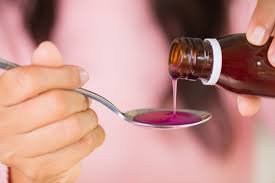“Comparative Analysis of Sweetening Agents in Liquid Pharmaceutical Dosage Forms”

Sweetening Agents Used in Oral Pharmaceutical Suspensions – Detailed Explanation
Oral pharmaceutical suspensions are liquid dosage forms containing finely divided drug particles dispersed in a liquid vehicle. Since these suspensions are intended to be ingested, taste plays a critical role in patient compliance, especially among pediatric and geriatric populations. Many active pharmaceutical ingredients (APIs) have a bitter or unpleasant taste, so sweetening agents are incorporated to mask or improve the taste.
1. Importance of Sweetening Agents
Sweetening agents serve the following key purposes:
-
Enhance palatability by masking bitterness or other unpleasant tastes.
-
Improve patient compliance, especially in children.
-
Sometimes provide viscosity or mouthfeel benefits in addition to sweetness.
-
May also serve as preservatives or stabilizers, depending on their chemical nature.
2. Classification of Sweetening Agents
Sweeteners used in pharmaceutical suspensions can be broadly classified into:
A. Natural Sweeteners
These are derived from plant or natural sources.
-
Sucrose
-
Most commonly used.
-
Provides a clean, pleasant taste.
-
Used in concentrations of 60–70% w/v (acts as a preservative at this range).
-
Can affect viscosity.
-
Not suitable for diabetic patients.
-
-
Sorbitol
-
A sugar alcohol (polyol).
-
About 60% as sweet as sucrose.
-
Used in sugar-free or diabetic formulations.
-
Can cause a laxative effect in high doses.
-
-
Mannitol
-
Less hygroscopic than sorbitol.
-
Has a cooling effect and is non-cariogenic.
-
Often used in chewable tablets and suspensions for mouthfeel enhancement.
-
-
Honey and Glucose
-
Occasionally used but less common due to variability and risk of microbial contamination.
-
B. Artificial (Synthetic) Sweeteners
Used for sugar-free, diabetic-friendly, or low-calorie formulations.
-
Saccharin
-
About 300 times sweeter than sucrose.
-
Stable over a wide pH range.
-
Has a metallic or bitter aftertaste.
-
-
Aspartame
-
About 200 times sweeter than sucrose.
-
Has a clean taste but is unstable in heat or low/high pH.
-
Not suitable for phenylketonurics.
-
-
Acesulfame Potassium (Acesulfame K)
-
Around 200 times sweeter than sucrose.
-
Stable in heat and over a range of pH values.
-
Often used in combination with other sweeteners.
-
-
Sucralose
-
About 600 times sweeter than sucrose.
-
Highly stable and has a taste profile close to sugar.
-
Suitable for diabetics and stable in various conditions.
-
3. Selection Criteria for Sweetening Agents
Formulators must consider several factors when choosing a sweetener:
-
Sweetness intensity and taste profile (clean, bitter, lingering).
-
Stability under storage conditions and pH.
-
Compatibility with other formulation ingredients.
-
Patient population (e.g., diabetics, children, phenylketonurics).
-
Regulatory status and safety profile.
-
Viscosity contribution, if any.
4. Combinations of Sweeteners
It is common to use combinations of sweeteners to:
-
Enhance sweetness synergy.
-
Improve taste masking.
-
Reduce unwanted aftertaste (e.g., metallic, bitter).
Example: Sucralose + Sorbitol or Aspartame + Acesulfame K
5. Challenges in Using Sweetening Agents
-
Chemical instability in certain formulations (e.g., aspartame in acidic media).
-
Unpleasant aftertastes (e.g., saccharin).
-
Risk of microbial contamination (e.g., with natural sweeteners like honey).
-
Regulatory restrictions in some countries.
-
Individual patient preferences or allergies.
6. Regulatory and Safety Considerations
-
All sweeteners used must be approved by regulatory bodies such as the FDA, EMA, or local authorities.
-
Labeling is required, especially for sweeteners like aspartame (due to phenylalanine content).
-
Maximum allowable limits are often set for artificial sweeteners.
Conclusion
Sweetening agents are vital in the formulation of oral pharmaceutical suspensions to ensure palatability and patient adherence. Careful selection, appropriate combinations, and consideration of patient-specific factors are essential for developing safe, effective, and acceptable formulations
🎓 Discover one of the best Pharmaceutical Production courses available — click below to explore the course that’s shaping future Production skills

